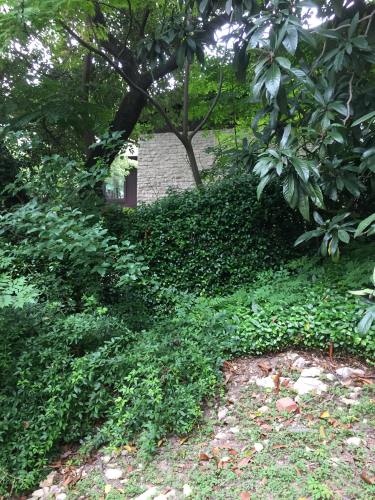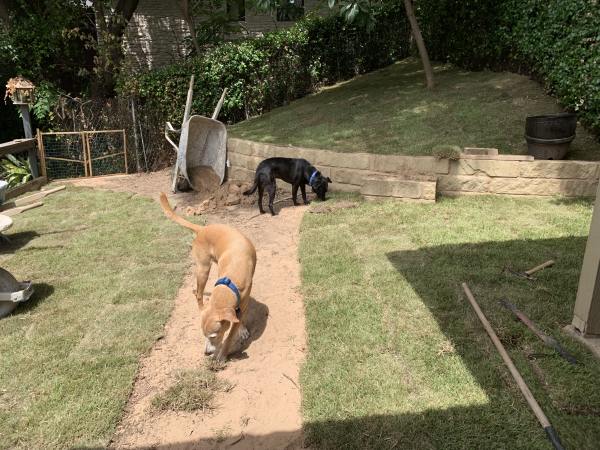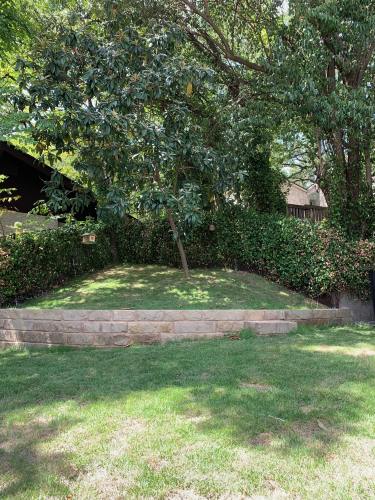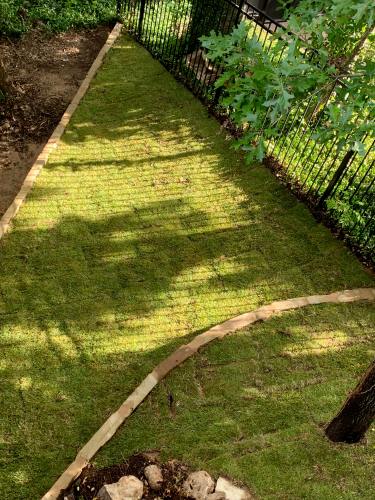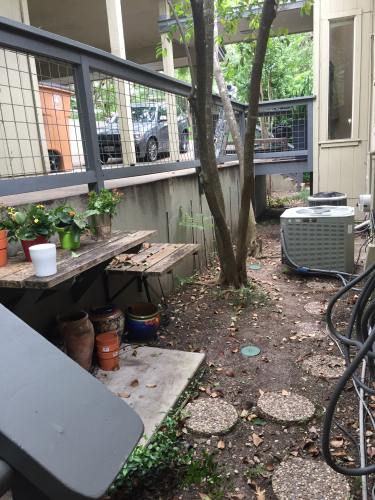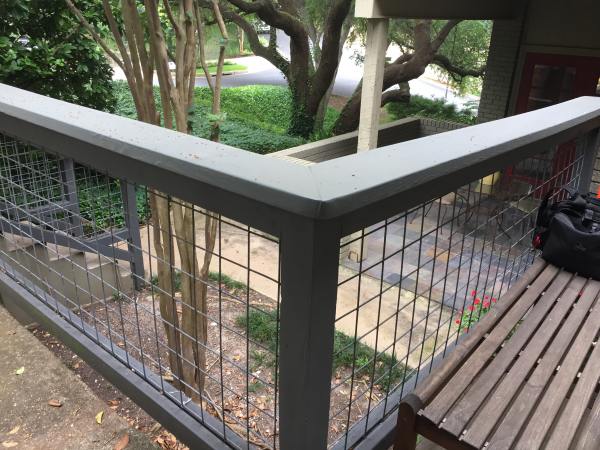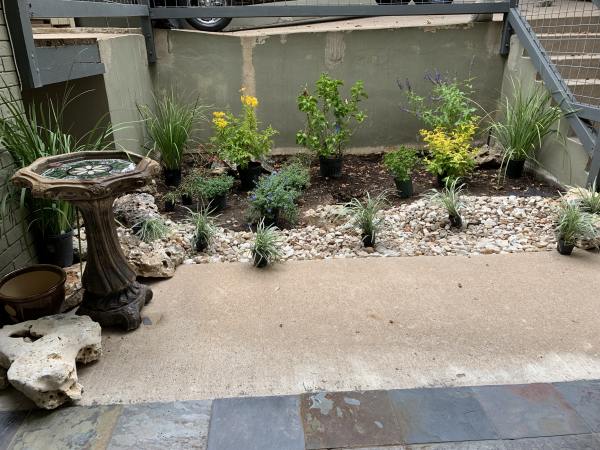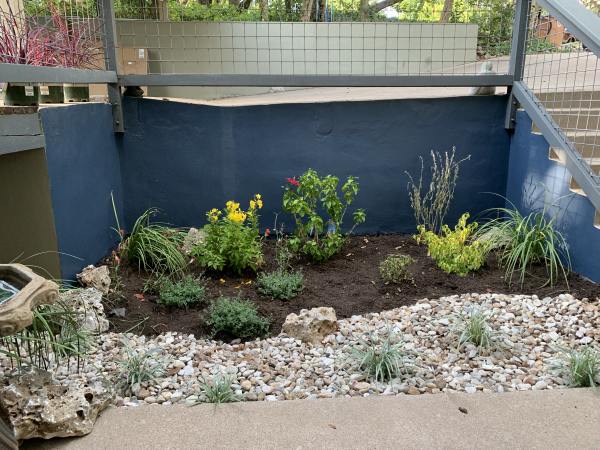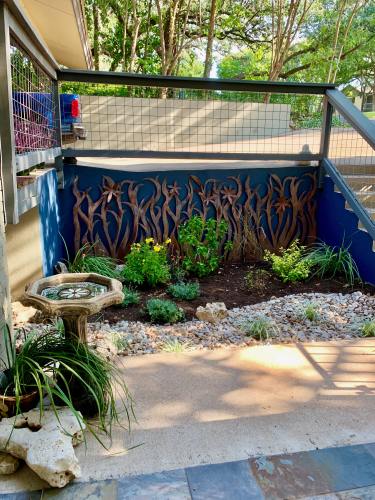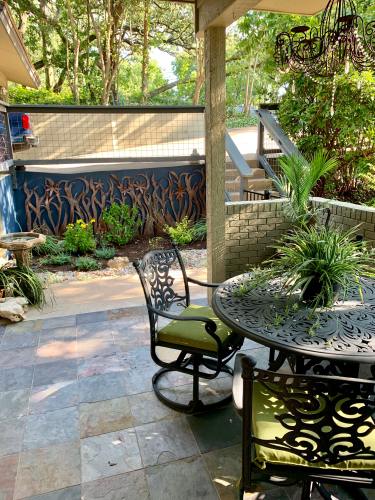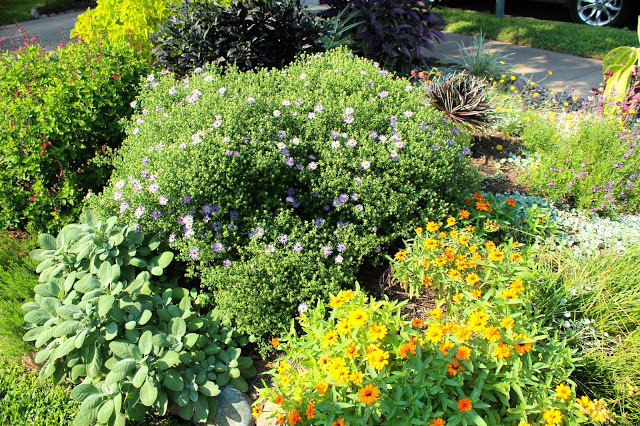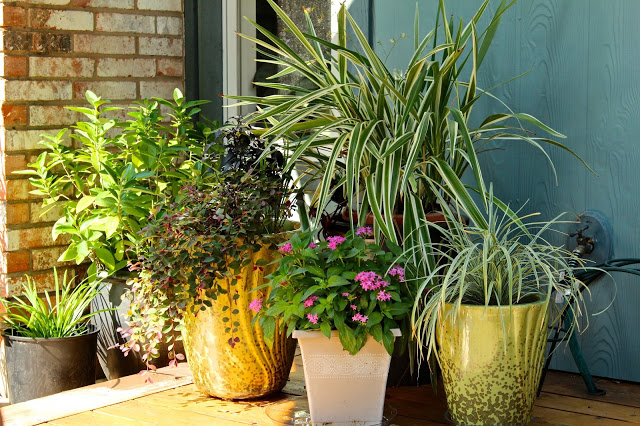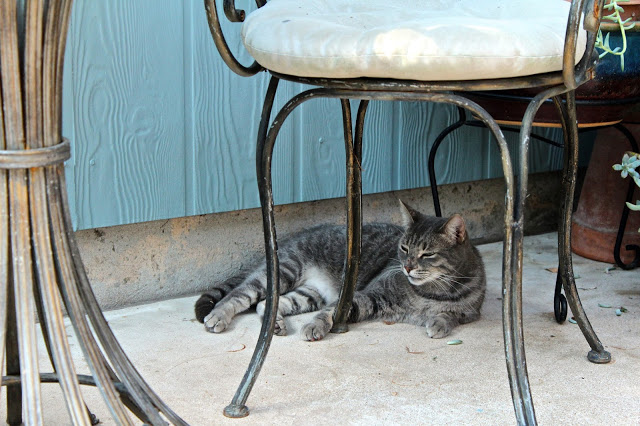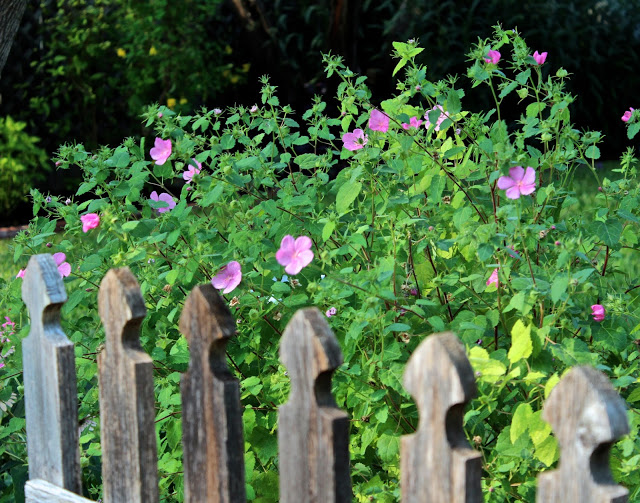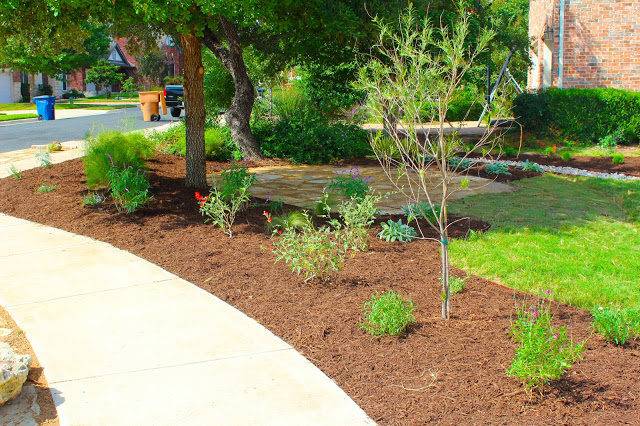Puget Sound Gardeners Fling – People, Plants, and More
Last month 100 garden social media influencers met in Puget Sound WA to tour gardens, share meals, and make new friends. This was the 15th such annual gathering, called the Gardeners Fling. We meet in a different city each year (except for 2 Covid-fraught summers) and the host city gardeners plan a 4-5 day outstanding garden experience.
Our time in Puget Sound was magical. Each garden, private and public, wowed in so many different ways.
I’ll start my virtual tour with the garden of one of our hosts, Camille Paulsen, @tahomaflora .
She has crafted her space to frame and enhance the many gorgeous views of Mount Tahoma, also known as Mount Rainier. The mountain enjoys almost mystical status around Seattle and Tacoma. The days start with an assessment about the visibility of the mountain and end on the same note. How fortunate her family is to have this National Geographic-worthy sight from their deck, their paths, their hills, and so many other vantage points.
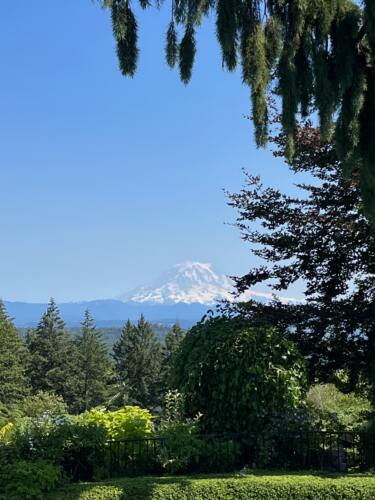 We were there on a clear day, and the mountain was glorious.
We were there on a clear day, and the mountain was glorious.
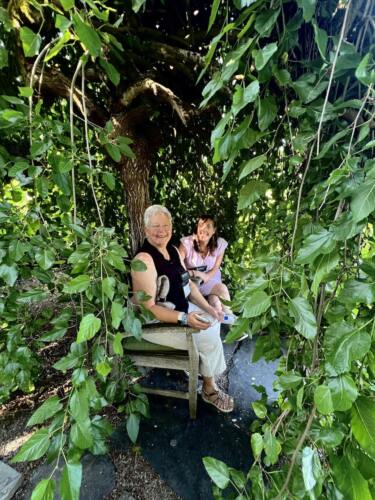
This little secret seating area on the edge of the hillside had a special view, too.
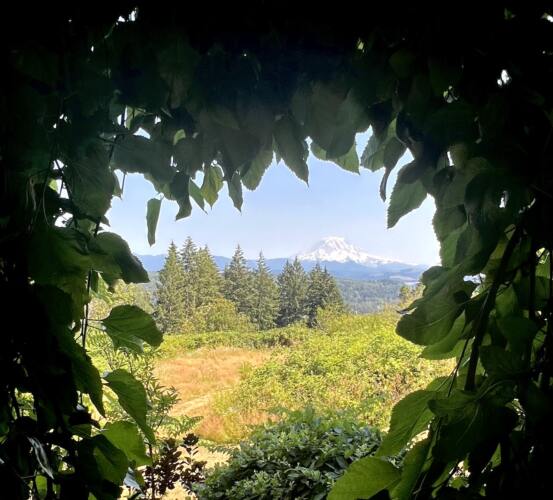
I can imagine sneaking away to to escape here.
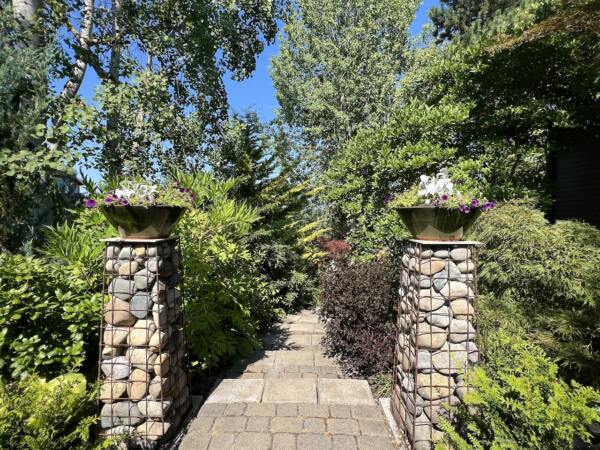
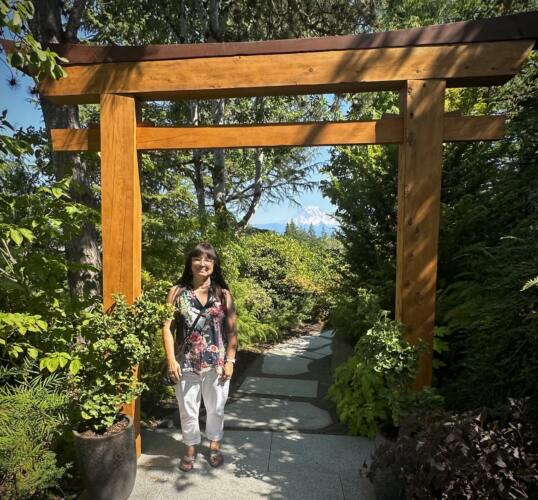
Several paths wind through the property, all of them welcoming and interesting. And many of them with an eye to the view.

On the back deck, a bit of whimsy highlights the distance of treks to similar mountain hot spots.
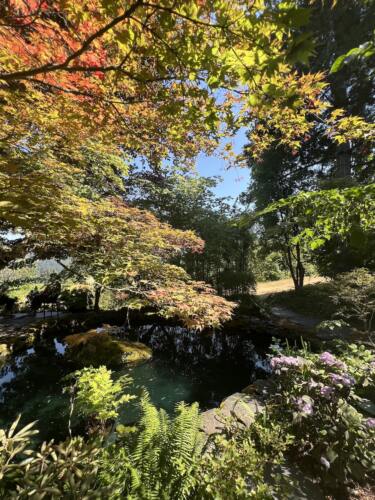
The light was striking as it poured in between the leaves of a collection of Japanese maples and other wispy trees.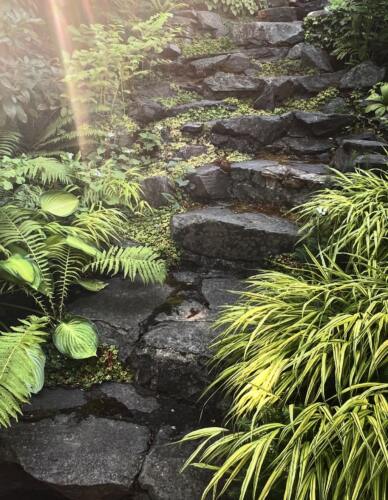
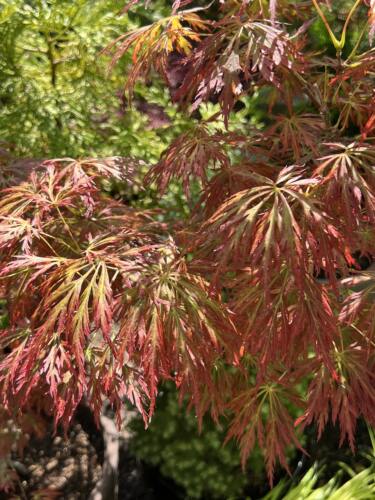
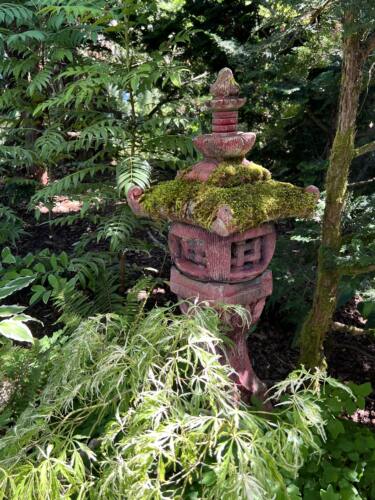
Camille’s artistic flair extends beyond the curating of plants to include an interesting assortment of art in the garden. Various carefully crafted vignettes were tucked throughout.
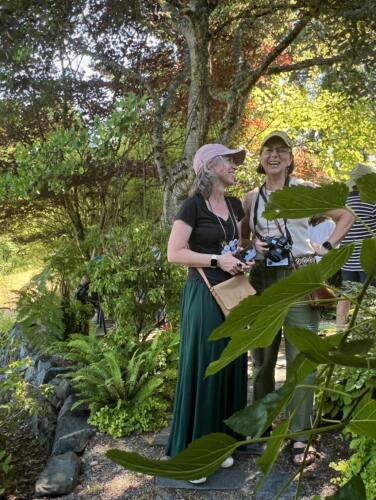
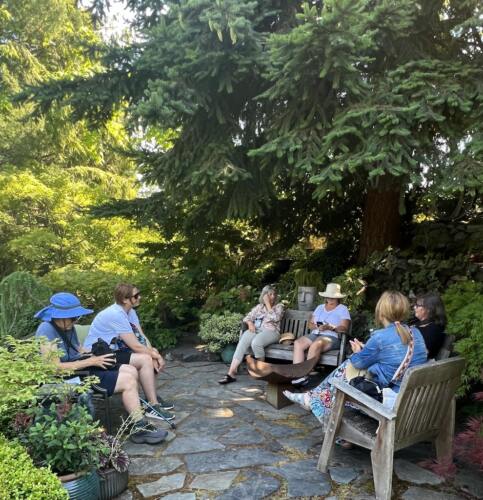
Sharing the adventure with so many long-time and new gardeners was as fun as discovering the garden itself.
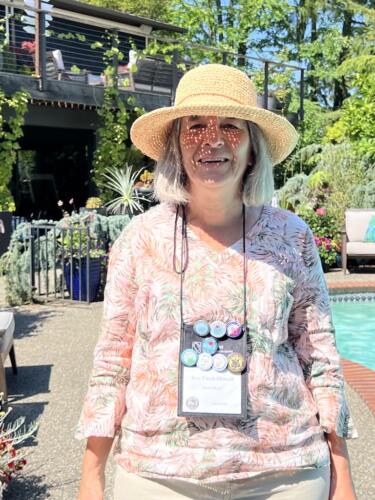
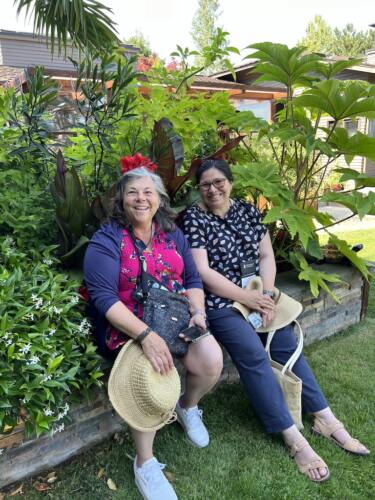
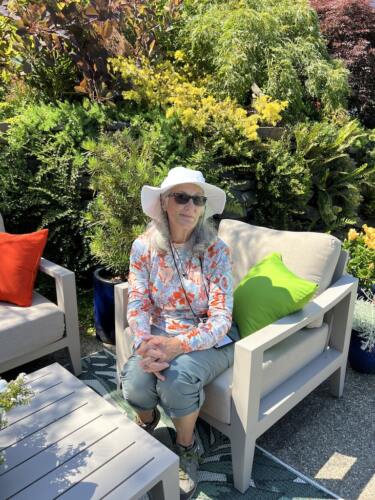
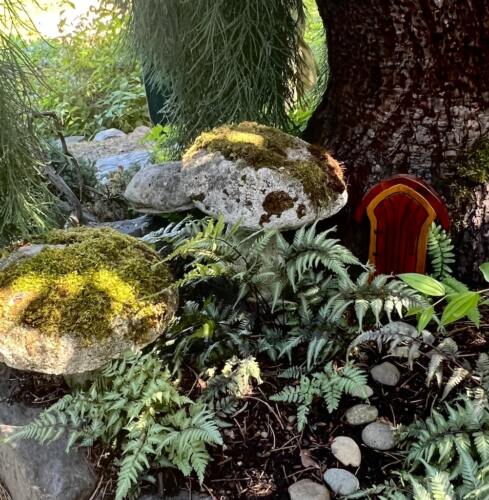
So many unique details caught my eye.
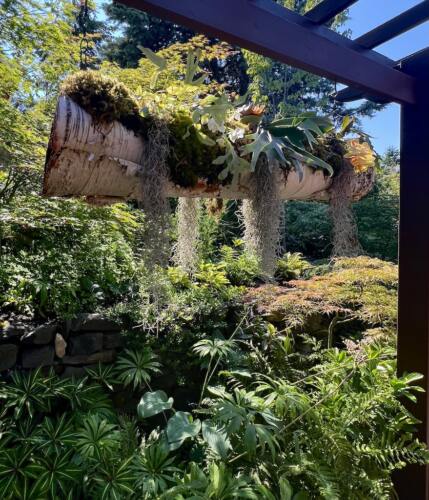
Sweet spaces scattered everywhere.
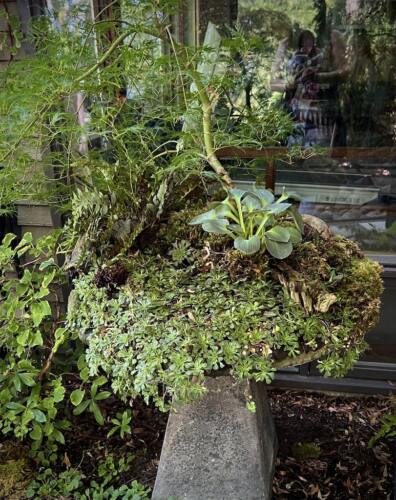
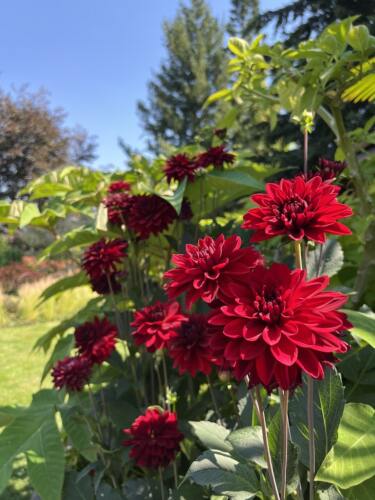
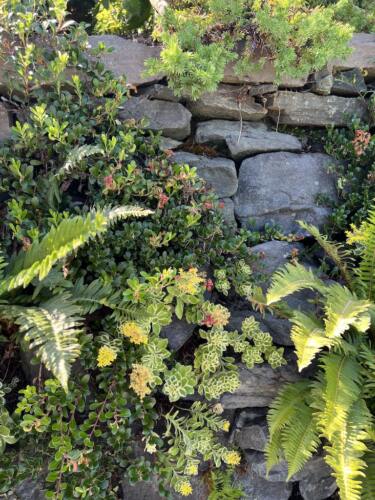
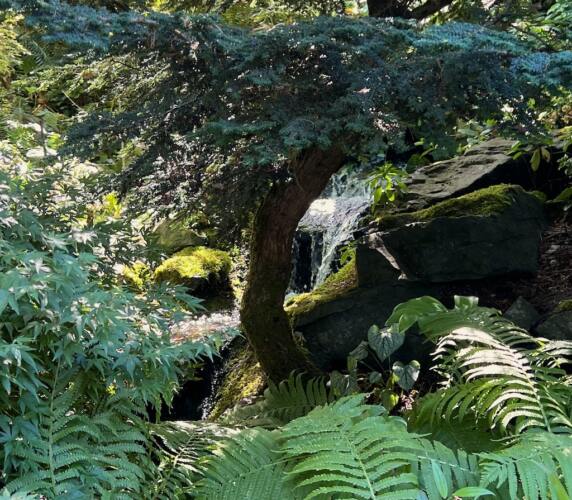
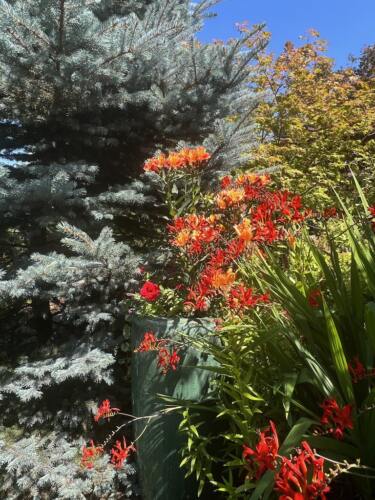
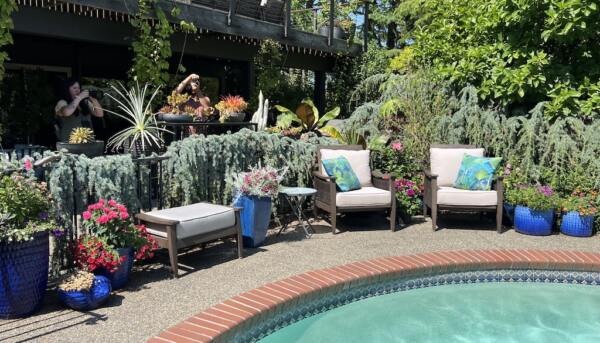
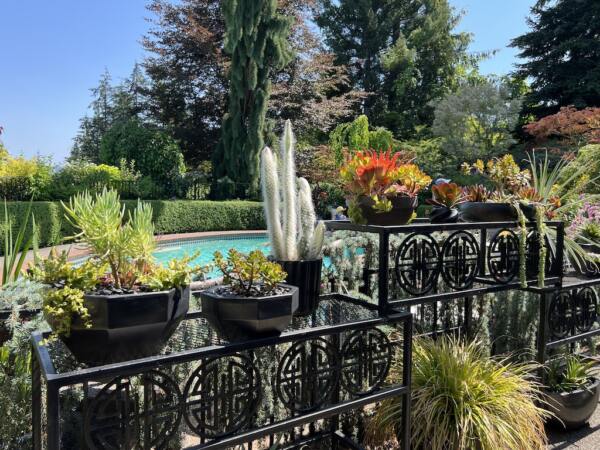
The pool area was a lovely gathering spot filled with interesting pots and plants.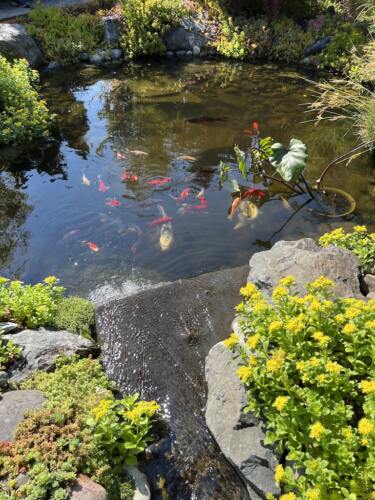
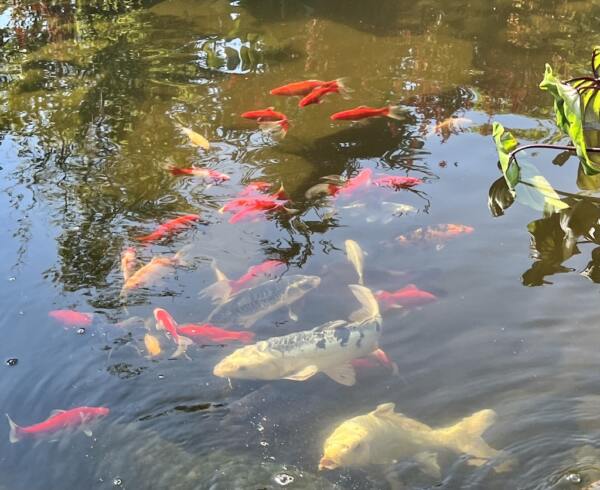
Tucked down the hill in the forest, koi languished in a beautiful pond, suprised by all their guests.
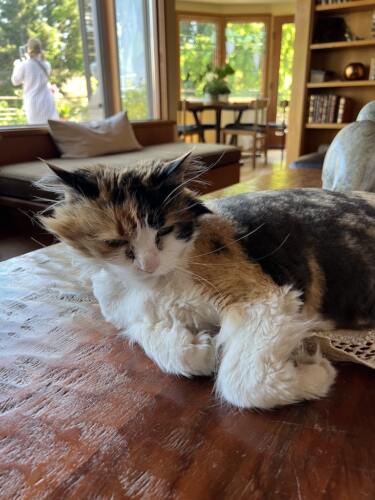
Enjoying some pats, Camille’s cat seemed unfazed by all the garden gawkers.
Thanks, Camille, for a great tour of your lovingly created garden.
Another post to come soon highlighting other beautiful sights from the 2024 Puget Sound Gardeners Fling.

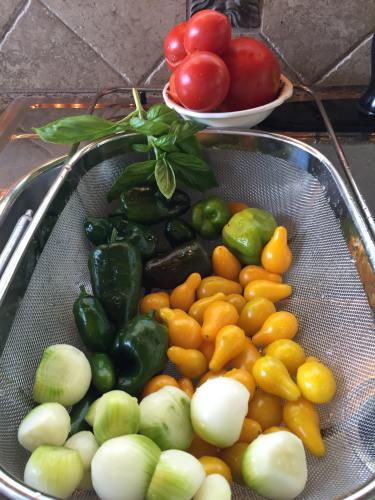 Many would-be vegetable gardeners are thwarted by a lack of experience or space, impenetrable rocky soil or clay, or a shortage of sunshine. With limited space on a balcony or patio, too much shade or landscape conditions that aren’t conducive to vegetable gardening, what’s a wannabe green thumb to do?
Many would-be vegetable gardeners are thwarted by a lack of experience or space, impenetrable rocky soil or clay, or a shortage of sunshine. With limited space on a balcony or patio, too much shade or landscape conditions that aren’t conducive to vegetable gardening, what’s a wannabe green thumb to do?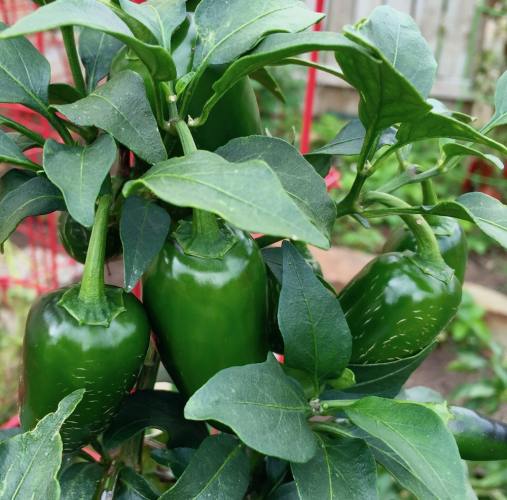 There are many other container options for inexpensive and moveable mini-gardens, too. Consider large 5-gallon plastic buckets, leftover from house projects. Other options include wooden barrels, galvanized tubs, even bushel baskets. Just make sure the container has adequate drainage by poking holes in the bottom. And, if you’d rather not look at a white plastic pickle bucket housing your tomatoes, you can spray paint your container to match any garden decor. Make sure the container is safe, and not treated in any way with toxic materials.
There are many other container options for inexpensive and moveable mini-gardens, too. Consider large 5-gallon plastic buckets, leftover from house projects. Other options include wooden barrels, galvanized tubs, even bushel baskets. Just make sure the container has adequate drainage by poking holes in the bottom. And, if you’d rather not look at a white plastic pickle bucket housing your tomatoes, you can spray paint your container to match any garden decor. Make sure the container is safe, and not treated in any way with toxic materials.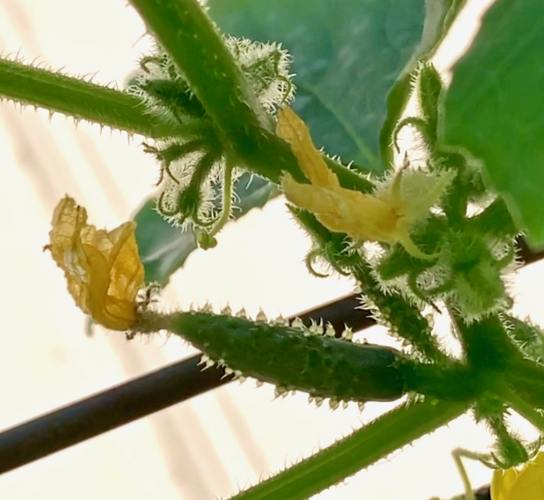 Use the right size planter. Smaller containers work for herbs, but for veggies, make sure your pot is big enough and has drainage holes in the bottom. One of the most important things you can do to ensure success is to use a big enough container—the bigger, the better. For one indeterminate tomato plant, for example, you need a container that is at least 1 square foot, but 2 square feet is better. Five-gallon buckets (with holes drilled) are the perfect size for one plant.
Use the right size planter. Smaller containers work for herbs, but for veggies, make sure your pot is big enough and has drainage holes in the bottom. One of the most important things you can do to ensure success is to use a big enough container—the bigger, the better. For one indeterminate tomato plant, for example, you need a container that is at least 1 square foot, but 2 square feet is better. Five-gallon buckets (with holes drilled) are the perfect size for one plant.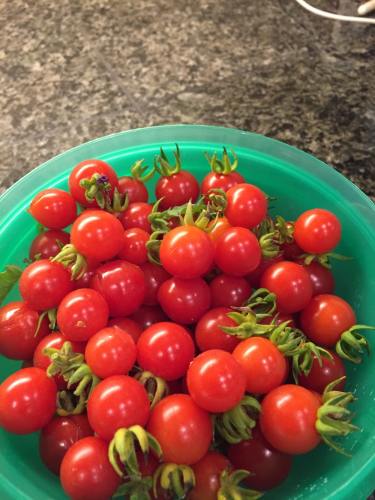 Be sure to water regularly to keep plants happy and healthy. Keeping your containers near a water source will make regular watering easier.
Be sure to water regularly to keep plants happy and healthy. Keeping your containers near a water source will make regular watering easier.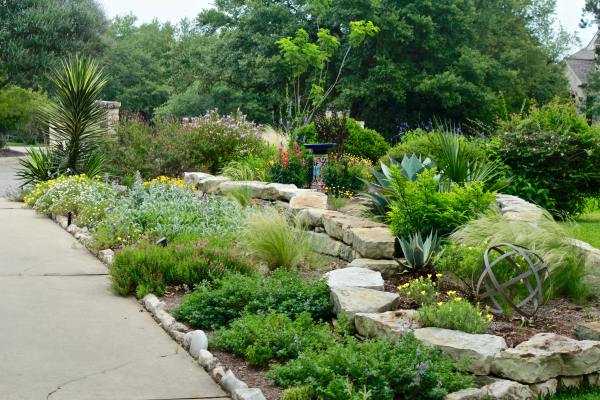 I have moved on, as the new garden really needs me desperately. The new owners of my garden have asked for my help in getting to the know the garden and how to care for it. And, they’ve been very generous about my collecting some seeds and a few volunteers as well. I look forward to teaching them to care for all my plant children.
I have moved on, as the new garden really needs me desperately. The new owners of my garden have asked for my help in getting to the know the garden and how to care for it. And, they’ve been very generous about my collecting some seeds and a few volunteers as well. I look forward to teaching them to care for all my plant children.